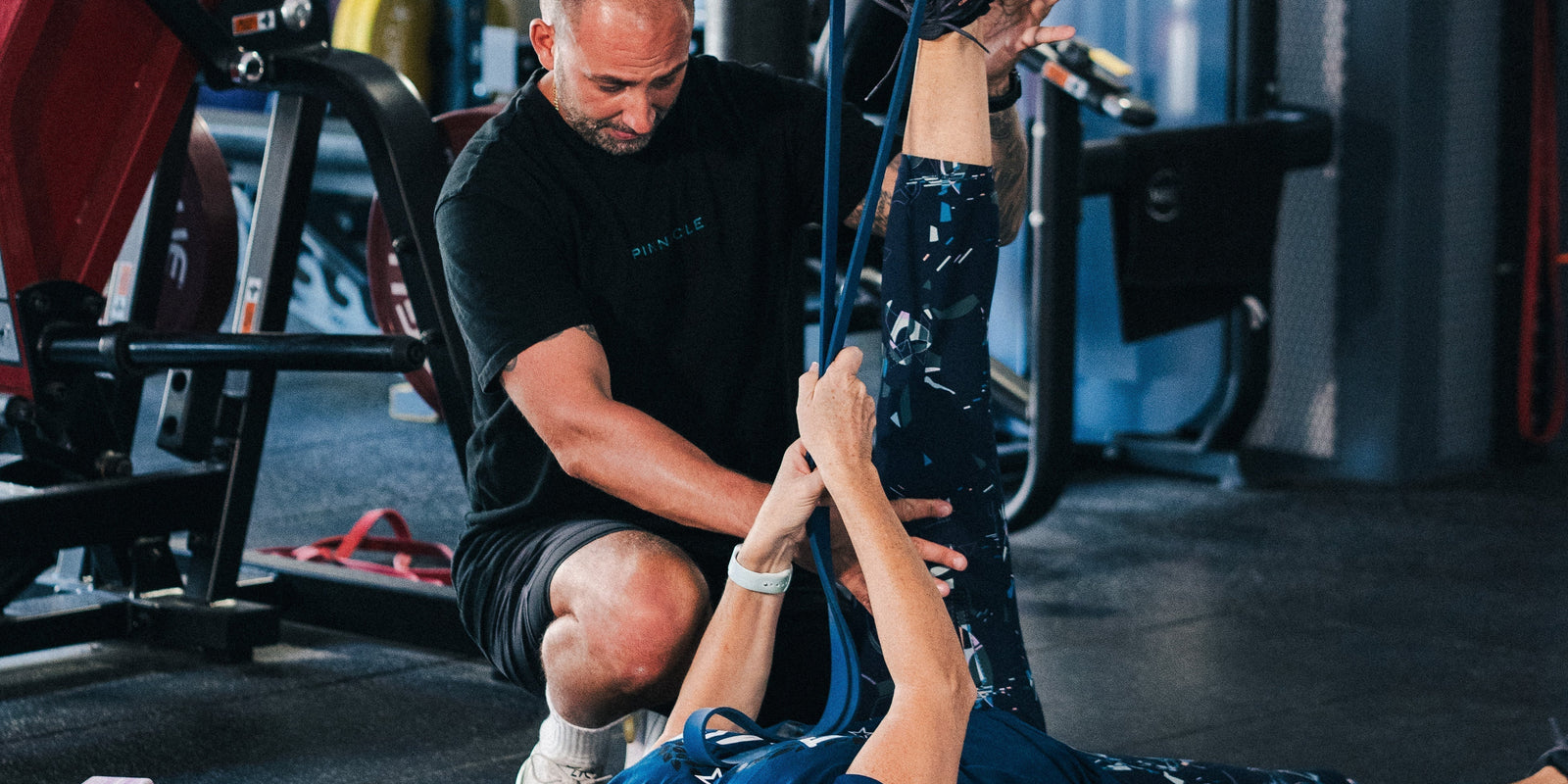Achilles Tendonitis Treatment in Totteridge and Whetstone
At Pinnacle Fitness and Health in Totteridge and Whetstone, we specialise in treating Achilles tendon injuries — from mild inflammation to chronic tendon pain. Our expert team uses advanced techniques including Shockwave Therapy, Osteopathy and progressive rehabilitation to reduce pain, restore strength, and prevent recurrence.
Achilles Tendonitis
Anatomically the Achilles tendon is a strong fibrous band of connective tissue that rises from the heel bone and attaches into the calf muscles. It is the thickest tendon in the body and plays a pivotal role in the walking gait cycle as it provides the attachment site for the gastrocnemius (calf) muscle whose action is to lift the heel when walking.
Due to its high weight-bearing nature, the Achilles tendon is prone to injury. An overloading of the calf muscles can lead to increased pressure on the Achilles tendon, leading to inflammation and degeneration creating pain, known as a tendonitis.
Achilles Tendonitis – is a term used to describe inflammation of the Achilles tendon and commonly used when symptoms are acute. If however, the problem persists and the condition becomes chronic a change in the tendon often appears and a thickening of the Achilles tendon is common with increased swelling.
It’s at this time that you are looking at a more long-term issue and it’s likely you are suffering from Achilles Tendonopathy.
Often patients complain of pain around the achilles when walking or after they have finished exercising.
If the injury worsens then the pain may come on during activity as well as after. Less commonly, the Achilles tendon can also be injured by over stretching in a single incident, causing a potential tear or rupture of the muscle.
It may be weaker and significantly painful after this kind of injury.

Causes of Achilles Tendonitis
- Overuse Injuries – Increased activity on the calf and Achilles tendon will result in tightness and inflammation
- Age – Unfortunately as we get older tendons become weaker and start to degenerate as a result the Achilles is prone to becoming aggravated
- Overweight – An increase in weight can result in an increased deans on the Achilles Tendon resulting in overuse and inflammation
- Poor Foot Biomechanics – People who suffer from High Arches or Flat Feet are more prone to sustaining Achilles tendon injuries
Symptoms and Diagnosis of Achilles Tendonitis
Symptoms
- Pain and inflammation situated around the top of the heel and around the Achilles tendon
- Swelling and thickening of the Achilles Tendon, potentially bruising present
- Pain is experienced when walking and in particular when lifting the heel off the ground
- Potentially more pain present in the morning and with an increase in activity
- Tightness and pain present around the calf and Achilles tendon
Diagnosis
A clinical examination will identify the exact site of pain and assess the tendon’s flexibility and strength. In some cases, ultrasound or MRI imaging may be recommended to assess the extent of the injury and rule out a partial tear or rupture.
At Pinnacle Fitness and Health, we also perform a gait and movement analysis to understand how your biomechanics contribute to the problem — ensuring a more complete recovery plan.
Treatment for Achilles Tendonitis
The goal of treatment is to reduce inflammation, restore healthy tendon function, and strengthen the surrounding muscles.
Our tailored treatment plans may include:
1️⃣ Shockwave Therapy
Shockwave Therapy is one of the most effective, evidence-based treatments for chronic Achilles Tendinopathy. It stimulates blood flow, breaks down scar tissue, and promotes collagen production to accelerate healing — especially when traditional rest and rehab haven’t worked.
2️⃣ Manual Therapy and Rehabilitation
Our osteopaths and physiotherapists use targeted joint mobilisations, soft tissue massage, and stretching to relieve tension and improve flexibility.
You’ll also receive a personalised exercise plan focused on eccentric calf loading and ankle stability — crucial for tendon recovery.
3️⃣ Supportive Techniques
We may use Kinesiology Taping to offload stress on the tendon and reduce strain during movement.
For athletes or active patients, we also guide training load management to prevent re-injury.
Our 3-Step Achilles Recovery Programme
At Pinnacle Fitness and Health, we use a structured approach to ensure full recovery:
1️⃣ Assessment & Diagnosis – Full biomechanical assessment and movement screening to identify root causes.
2️⃣ Targeted Treatment – Shockwave therapy, manual techniques, and exercise prescription to relieve pain and promote healing.
3️⃣ Rehabilitation & Prevention – Progressive strengthening and conditioning in our state-of-the-art gym, helping you regain power and prevent recurrence.
Why Choose Pinnacle Fitness and Health?
-
Experienced multidisciplinary team of osteopaths, physiotherapists, and rehab specialists
-
Advanced Shockwave Therapy Clinic serving Totteridge and Whetstone
-
Access to our state-of-the-art rehabilitation gym for full recovery support
-
Individualised treatment tailored to your lifestyle and activity level
Book Your Complimentary 15-Minute Consultation
If you’re struggling with Achilles pain or stiffness, don’t wait for it to worsen.
We offer a complimentary 15-minute consultation at our Totteridge and Whetstone clinic to discuss your symptoms, answer your questions, and outline a treatment plan that gets you moving pain-free again.
👉 Book your free consultation today and take the first step toward lasting recovery.


